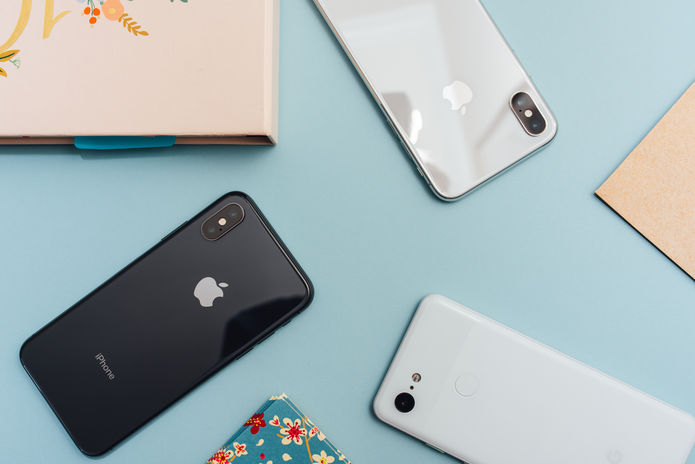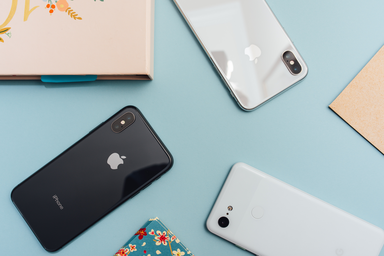There is no denying that screen addiction is a real thing. Our phone screen is the first thing that we look at in the morning. It is also the last thing, which we look at before sleeping. Is our inability to resist the temptation to be blamed?
Partly yes, let’s not fool ourselves, but the companies owning the apps also have a role to play in it. So today, let’s turn our attention towards the app developers who have created this metaphoric adhesive between our eyes and the phone screens. We will look at the various forms of marketing strategies that are used to make us addicted to these apps and in consequence, to our phones.
Smartphone usage is increasing rapidly each year. More and more people are using them. It is projected that by 2019, there will be 2.5 billion smartphone users. But what is more important is that the people are using them for all sorts of things. In other words, not only the acquisition of smartphones has been increasing but also a dependency on them has been increasing. Everybody has several apps providing various kinds of services, and almost everyone has one or more social media accounts where they spend a significant amount of time.
A few months ago, Vox, a popular media outlet, made a video about screen addiction with the premise that phones are ‘designed to be addictive’. What Vox was getting at is that the software design of the app is made such that one would want to spend more time on them. For apps, designers use certain tricks to that effect, which we shall discuss below:
Colour Play
The first addictive design element in apps is their colour. The human brain is attracted to warmer, brighter colours. You are more likely to click on something that attracts your eye.
Notice the difference between the colour scheme between the older and the new Instagram icon. The former was brown and much more subdued and, while the new icon is brighter with reds, yellows and pinks. Several other apps have made similar modifications.
Notification badges, too, are coloured red so that the brain doesn’t miss it. Such a colour scheme creates a false sense of emergency. Hence, there is the desperate need to check the notifications.
Tricked By Design
The second addictive element used to trick the brain is the basic design or rather, the structure of the app.
Apps like Facebook, Instagram, Twitter, are designed with a ‘never-ending’ format. You can keep on scrolling and scrolling, and you will never reach an end.
In such apps, even the refresh feature, which works by a pulling down action, resembles the lever of a slot machine that is known to be one of the most addictive machines in the whole gambling/casino business. The reason for that, as Vox explains, is that this action gives us an ‘illusion of control’.
We, as humans, are wired to reach out for activities that increase our dopamine levels. Dopamine is one of the chemicals which affects our happiness or pleasure levels. Several companies use different methods by which their product experience can increase the dopamine levels of their consumers to improve their chances of the customers coming back to use their product. App design is almost always aimed at providing customers with a dopamine rush.
Tristan Harris, a former Google employee who was a ‘design ethicist ’(someone looks at the ethical aspect of how products are designed), openly voices his dissent against companies who use these methods to lure in consumers into more screen time. He works towards addressing the problem through his initiative called Time Well Spent, which not only helps one understand the concepts behind ethical product designs but also aids product designers to that end.
What Can We Do?
So, what can we do to avoid these traps? First, we won’t suggest that you should not use these apps at all. Nobody got time for that. There, however, are small steps that you can take to bypass some of the subconscious cues that make you spend more and more time on the screen. Or as Tristan Harris calls it, ‘getting sucked into an endless vortex of stuff’. Because again, nobody got time for that.
Second, there are apps which help you to lessen the use of other apps (you can be certain that the irony is not lost on me). These apps prevent notifications at designated times. Some freeze your phone if you are tempted to use it during that pre-decided time. Others give points or have some other system of gratification for controlling your screen time.
You can also see the statistics for how many hours per day, week and month you have spent in front of your phone screen, what apps you predominantly use, and just how many times in a day you open your phone. This will help you get an idea of the extent of your phone usage. Even the simple act of knowing how many hours get sucked out of your life on mindless scrolling will create some form of self-consciousness against using your phone.
A healthy relationship with anyone and anything is what the doctor recommends for a long and satisfactory life. And in 2018, one of the most important relationships that we share is with our phones. It’s time we extend the advice to this alliance as well.
Edited by Kartika Puri (UG 2019)



